
Beppu is an area famous for its hot springs, where it is a place that has the greatest number of hot spring sources and amount of hot spring water in Japan. KAI Beppu is located in the Kitahama district, which overlooks Beppu Bay. Since the opening of the old Beppu port back in the Meiji period, many hot spring lovers from all over Japan were able to visit this historical area. Beppu became a renowned hot spring town in Japan, full of life both day and night. Designed by architect, Kuma Kengo, the interior is structured in a way that is reminiscent of a lively hot spring town, full of entertainment, incorporating a cobblestone alleyway and arcade areas.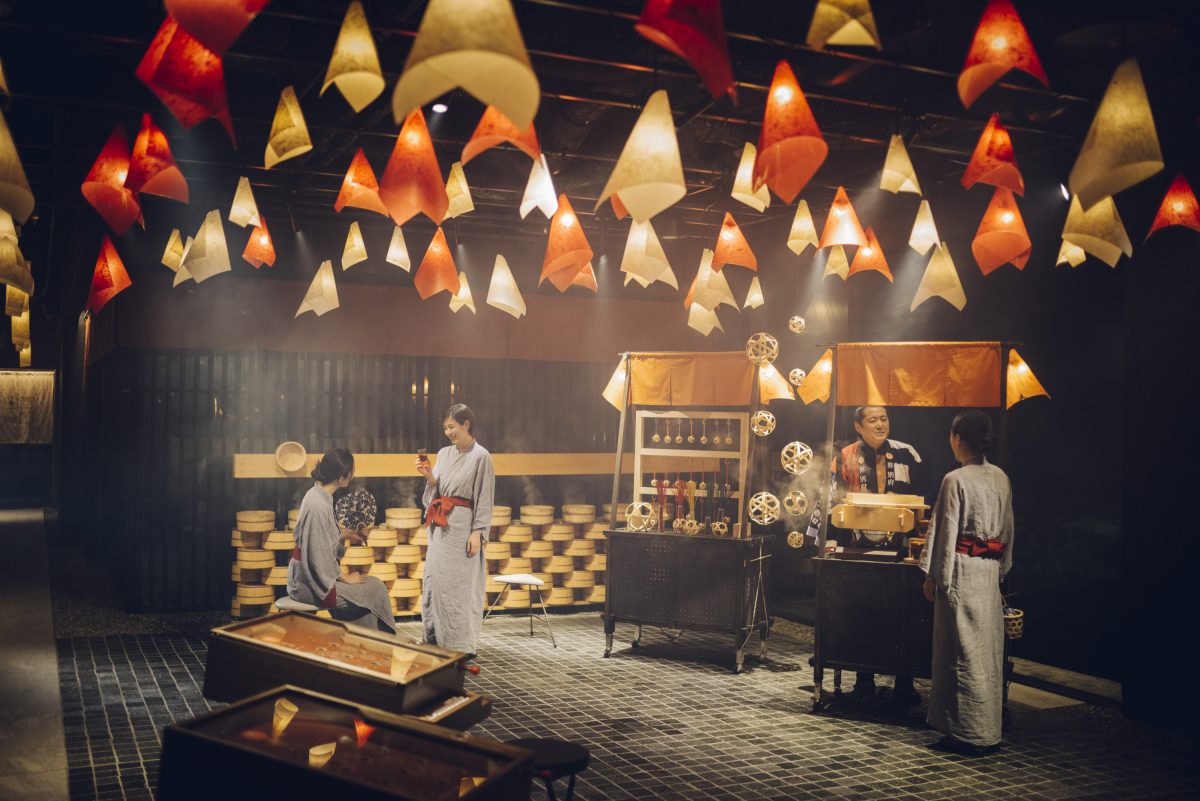
KAI Local flavors – Kaiseki course to enjoy abundant ingredients of Oita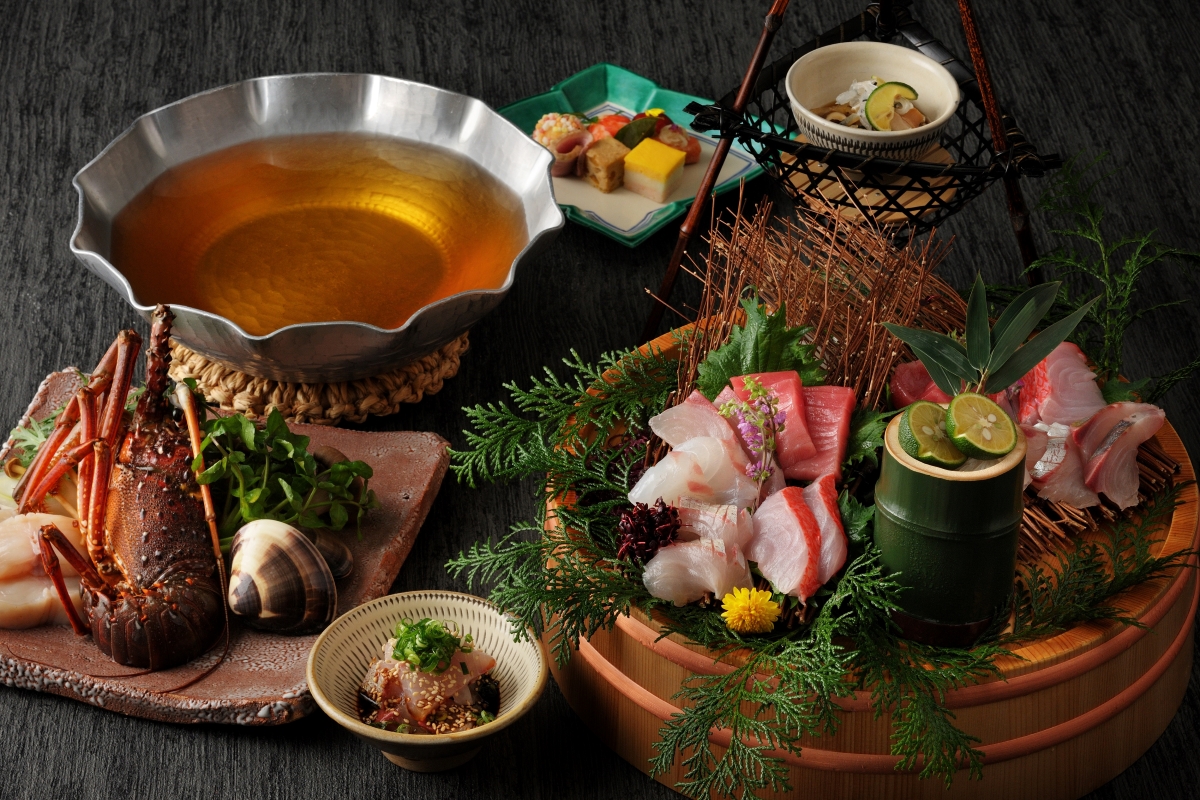 The dinner offered at KAI is a multi-course kaiseki meal, where the essence of the local area and season is reflected in each dish. The main course will be the "Seafood Bungo Hot Pot." Guests can savor fresh seafood, including Japanese spiny lobster and pufferfish, cooked in a hot pot. To conclude the meal, "Ryukyu," a local Oita prefecture dish of fresh fish marinated in a sweet and savory sauce, will be served over rice, then topped with the rich broth from the hot pot.
The dinner offered at KAI is a multi-course kaiseki meal, where the essence of the local area and season is reflected in each dish. The main course will be the "Seafood Bungo Hot Pot." Guests can savor fresh seafood, including Japanese spiny lobster and pufferfish, cooked in a hot pot. To conclude the meal, "Ryukyu," a local Oita prefecture dish of fresh fish marinated in a sweet and savory sauce, will be served over rice, then topped with the rich broth from the hot pot.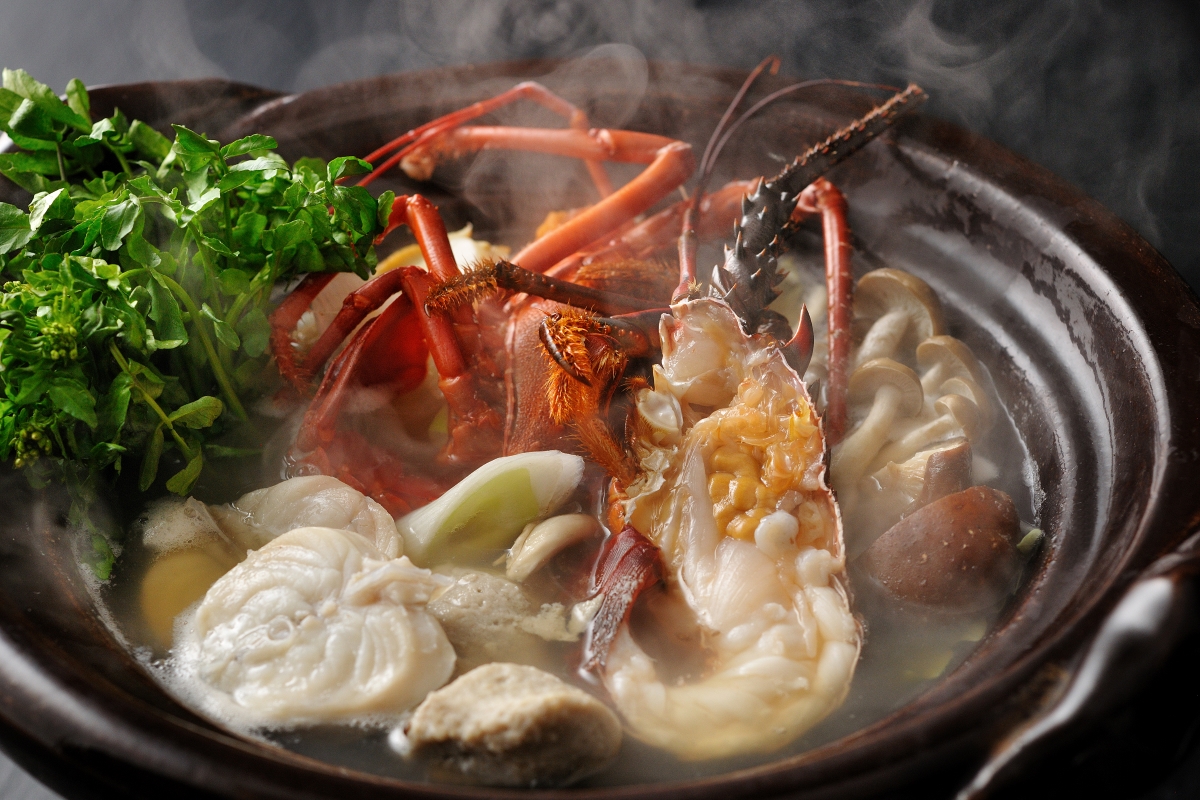
 KAI Cultural Discovery – Toji Jug Band
KAI Cultural Discovery – Toji Jug Band
One way of hospitality by the KAI properties is through KAI Cultural Discovery. Beppu Port was once filled with lively music especially at night, where visitors gathered to treat their ailments by soaking in the city’s hot spring waters—a practice known as toji. Inspired by this history, KAI Beppu offers a performance called Toji Jug Band, a session of abundant hot springs and musical sounds created by wooden pails, bringing the lively ambiance of the hot spring town into the ryokan.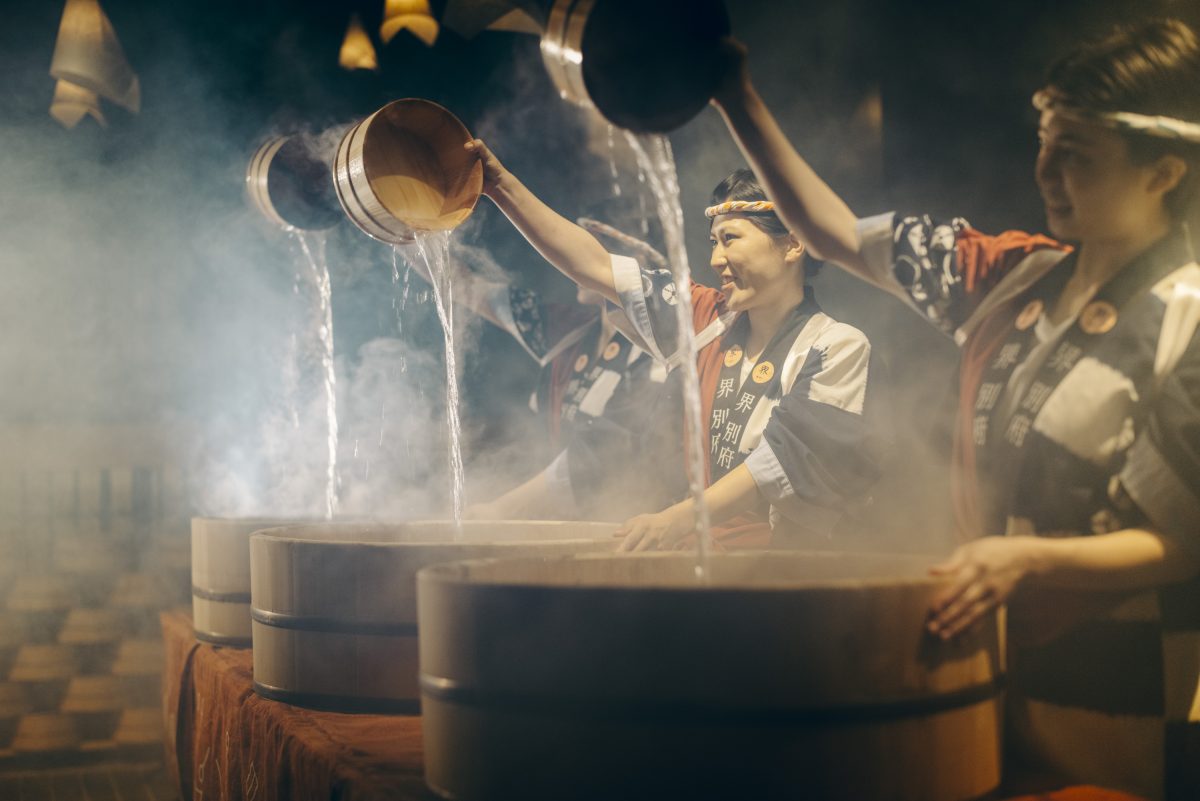 KAI Signature Rooms
KAI Signature Rooms
All guest rooms at KAI Beppu have an ocean view. One of the characteristics of the room is that it features a “picture window”, where the view of the sea is “cut out” as if it is a painting. In order to enhance the color of the sea, the walls, shoji doors (paper screen doors), and glass in the bathroom all incorporate a pink-brown color called “Kakishibu” (directly translates to bitter persimmon). This kakishibu color is inspired by the red color of the “Chinoike Jigoku” (Bloody Pond Hell) in Beppu, and the earthiness of the lava plateau, where the hot spring is found.
In addition, all 70 guest rooms are KAI Signature Rooms. One feature of the KAI brand is its inclusion of regional culture and handcrafts in the rooms. Bungo tie-dye fabrics are used for the headboards and foot throws, giving the room its uniqueness that can only be found at KAI Beppu. What is the Bungo tie-dyeing technique?
What is the Bungo tie-dyeing technique?
Bungo tie-dyeing technique originates in Oita Prefecture. In the present day, tie-dyeing techniques are separated into two main groups, the silk tie-dye of Kyoto and the cotton tie-dye in Nagoya (Arimatsu and Narumi area). It is said that the Bungo area, an old name for Oita, brought the cotton tie-dye technique to Nagoya. Although there are records of mass production of tie-dye fabrics during the Edo period, production decreased since the Meiji period and so, efforts have been made to restore it in recent years.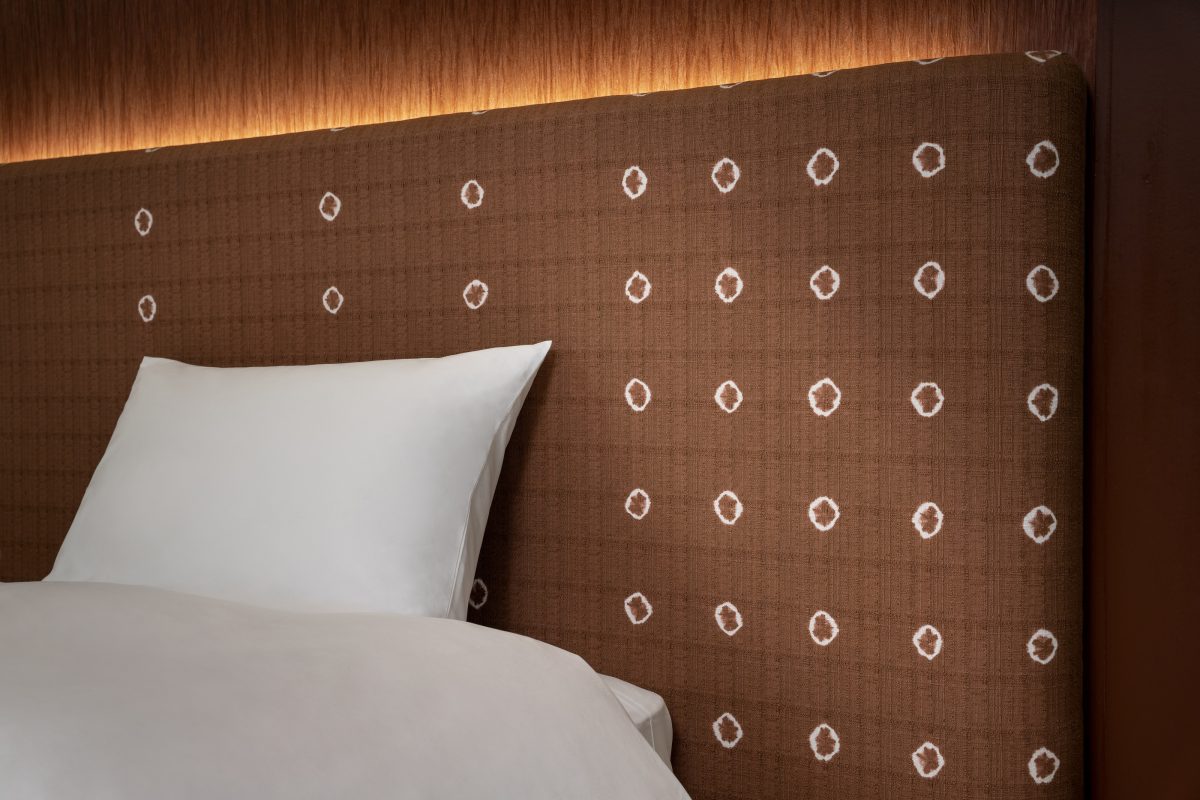 Comment from Hiroko Ando, tie-dye artist
Comment from Hiroko Ando, tie-dye artist
While working at Aichi University, I accompanied an investigation of the local industry in Arimatsu and Narumi area of Nagoya and learned about the technique of Bungo tie-dyeing technique. Although we started the investigation in Oita, which is my hometown, there were very few people who knew about Bungo tie-dye. About 30 years ago, we opened the “Yusoukai” in the hopes for more people to be aware of this local dye technique. Currently, while working on my own projects and workshops, I am involved with the production of the KAI Signature Rooms.
Special Features
Lobby area - Lab and hand & foot baths
Once you step inside the building, there is an open terrace overlooking Beppu Bay, which is connected to the lobby. Hand and foot baths are located near the terrace, where one can relax as the sea breeze passes by. At the back of the lobby, there is a cobblestone alleyway, illuminated by Japanese paper lanterns, that leads way to the Lab, a space inspired by the hot spring pipes found throughout the city of Beppu. An interior design that is reminiscent of a lively hot spring town awaits guests. 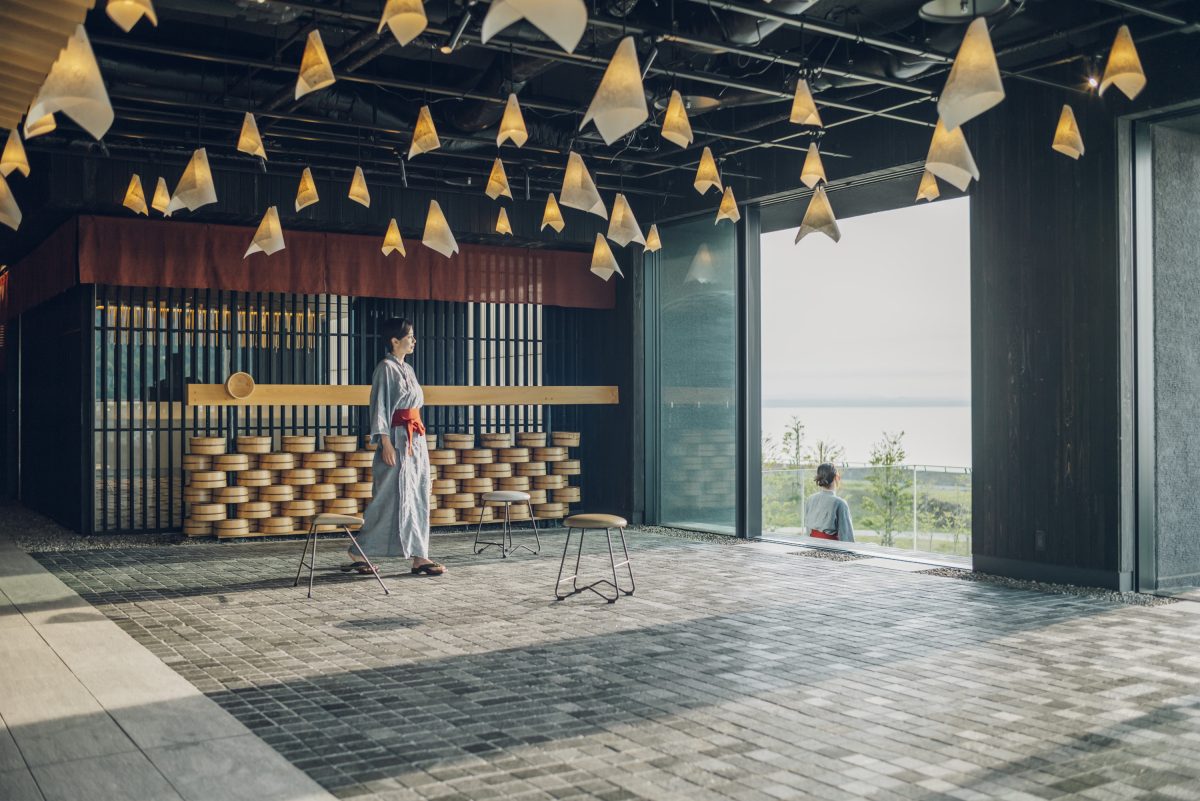
 Public Hot Springs
Public Hot Springs
A view of a Japanese garden can be enjoyed from the public hot springs and there is an outdoor and indoor bath. There are two indoor baths, the “Atsuyu” (hot water), which flows directly from the source, and the “Nuruyu” (warm water). It is a hydrogen carbonate spring so it has properties of baking soda, where it can soften and smoothen the skin. In addition, it is high in sodium, so it allows the body to retain heat. There are over 2,000 hot spring sources in Beppu and because the water at KAI Beppu is one of the most gentle on the skin, we recommend our bath as the last place to visit for hot spring hopping.
Hot spring water quality: sodium chloride, hydrogen carbonate pH: 7.2 Overview of KAI Beppu
Overview of KAI Beppu
Address: 2-14-29 Kitahama, Beppu, Oita
Number of floors: 11
Number of Rooms: 70
Facilities: Lobby, Dining, Travel Library, Shop, Public hot springs
Starting Room Rate: Starting from 31,000 JPY per night (per person for a 2 person room, includes tax, service charge, breakfast, and dinner)
Directions: 10 minutes by walk from JR Beppu Station, 60 minutes by car from Oita Airport
About KAI Brand
Onsen Ryokan loved by local and overseas travelers
KAI is a leading brand of onsen ryokan where every establishment offers a contemporary take on traditional Japanese inn whilst keeping Western comforts. KAI invites one to discover the multifaceted aspects of Japan through natural hot springs, exploration of local arts and entertainment, and classic Kaiseki-style course meals using local and seasonal flavors. Experience Washoku, Japanese cuisine, presented on carefully selected ceramics for full exposure to culinary sensations.
About Hoshino Resorts
Hoshino Resorts was first established as a Japanese inn/ryokan in 1914 in Karuizawa in Nagano Prefecture before it began the operation of other resorts in Japan. Today, it has evolved into a highly influential hotel management company and is run by 4th-generation family member Yoshiharu Hoshino. Providing a unique experience focused on the local charms of each destination and a high level of omotenashi, Japanese-style hospitality, the company has expanded rapidly out of Karuizawa since 2001 and now operates more than 55 accommodations both in and outside Japan with one of the following categories: luxury hotel brand "HOSHINOYA," hot spring ryokan brand "KAI," countryside resort hotel brand "RISONARE," city tourism hotel brand "OMO," free-spirited hotel brand "BEB," mountain hotel brand “LUCY,” or other unique lodgings.